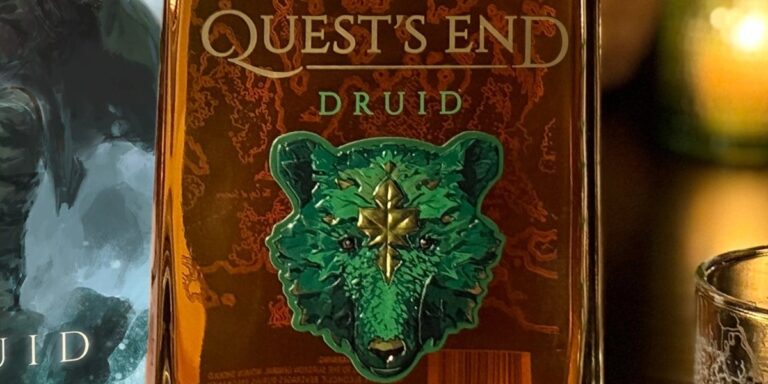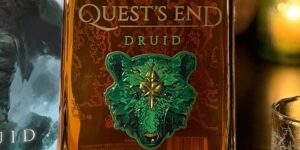Delilah S. Dawson brings the feeling of a Dungeons & Dragons campaign to life with “Dungeons & Dragons: Ravenloft: Heir of Strahd.” The novel follows a group of strangers who awaken in Barovia with no idea how they got there. This includes Rotrog, an arrogant orcish wizard; Chivarion, a sarcastically charming drow barbarian; Alishai, an aggressive tiefling paladin; Kah, a nervous kenku cleric; and Fielle, a naive human artificer.
The strangers are distrustful of one another. Although, they soon learn that they will need to rely on one another to survive. Altogether they face off against the mysterious and terrifying ruler of the land, Strahd von Zarovich. “Dungeons & Dragons: Ravenloft: Heir of Strahd” balances action, comedy, adventure, horror, and masterful character work in an engaging story.
In an exclusive interview with Temple of Geek, Dawson explained how she developed the characters’ evolution and trajectory. She also broke down her approach to Strahd and exploring different aspects of horror. Dawson discussed capturing the tone of the story. This includes finding the balance of comedy, horror, and drama that is often found in Dungeons & Dragons campaigns. [Spoiler warning for “Dungeons & Dragons: Ravenloft: Heir of Strahd”]
Building Up To Revealing The Truth About Strahd
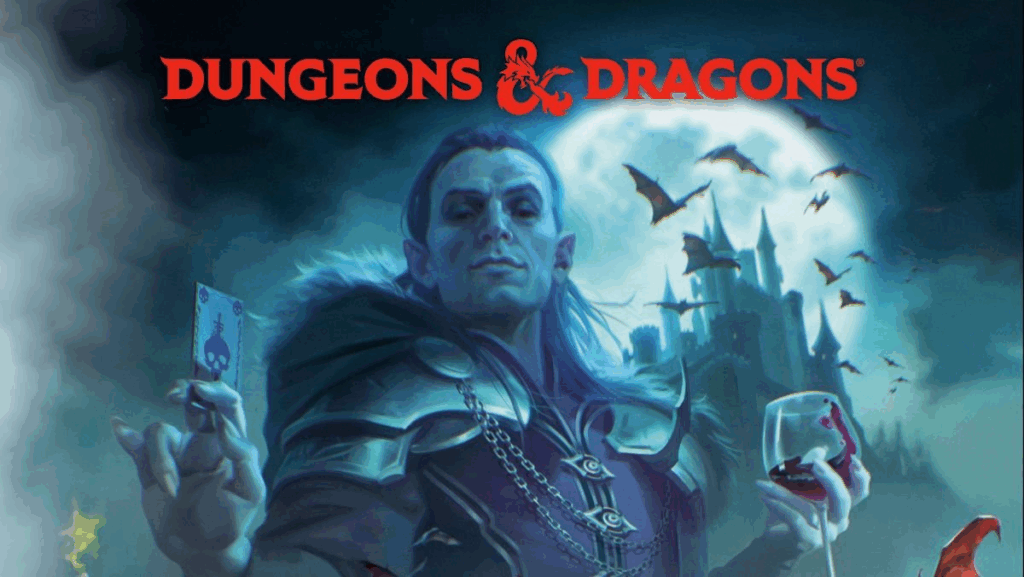
Temple of Geek: I love this story! I think one of the things I was most impressed with was the character evolutions. These are characters that you may not expect to see as the heroes. You make some of them very unlikable initially, and then they have such an interesting evolution to the point where you are rooting for them. What was your process of deciding, Hey, you’re not going to super want this character to win initially, and then how you got to a point where we were rooting for them by the end of the story?
Delilah S. Dawson: I worked with the Wizards people to come up with them. It was almost like filling out a baseball team roster where you’re like, okay, well, so I sent them various incarnations of we could have one of these and one of those and one of these. We knew that we didn’t want it to be characters you’d seen a bunch. We wanted it to be kind of not like the losers team, but some little weirdos. There’s no clear this is the good person who’s going to be the movie star.
You’re just like, oh, you guys are all kind of messed up, aren’t you? It was very fun to come up with the characters that would uniquely annoy each other. And ways for them to start off needling each other, especially Rotrog. It was so fun to just be like, oh, they’re going to hate this dude. I will say I had to really like Chivarion from the start. Every dungeon party needs a beastie himbo.
Temple of Geek: I do play D&D, I knew pieces of this that the characters within the story didn’t. I just loved as they slowly discovered that Strahd is a vampire. I just wanted to pull my hair out thinking, So why are you not figuring out what’s going on? Could you talk about that piece of it as well and really wanting that to not be clear for them initially?
Delilah S. Dawson: Well, I’m trying to do the same thing with this book that I do with my Star Wars books, which is to make the book an open door for new fans while giving the old school fans the understanding and the Easter eggs that they want to see there. So I’m really trying to get both of those groups to feel like this is a book that they’ll enjoy. So it had to do with making sure that things were explained.
That’s part of the fun of Ravenloft is everyone who ends up there doesn’t know why they’re there or what it is. So they have to discover. You don’t show up there like you’re showing up to a place that you’ve planned a road trip to, that you have a Zagat guide to. They just show up and they’re like, what? So that makes it kind of easy to roll things out for hopefully new fans.
That’s kind of the point of Strahd, it’s like when you watch Bram Stoker’s Dracula. You’re like, Jonathan Harker, let’s talk. How do you not get this? But there’s a lot of people that go through life with rose colored glasses on. If you have been told that vampires are not real your whole life, you might not believe that they are real.
Whereas Chivarion is like, oh my God, how are you guys? How have you not thought of vampire? And you’re just like, well, I don’t see an elephant in everyday life either. And I would be quite surprised if there was one on the road, even if I’ve heard of them. So yeah, it’s very much a case of balancing what readers need to learn versus what the characters would be learning in the immediate moment and figuring out for themselves.
We have the characters particular backgrounds. Several of them were kind of raised in isolation or in ways where the knowledge that they were allowed to consume was controlled. So I had to give them a little bit of ignorance. It’s not going to be much of a book. If you show up and he opens the door and you’re like, dude, we got to kill that guy.
Temple of Geek: What inspired the decision for your kenku character’s biggest dream to be to fly? That was such a cool and gut wrenching detail.
Delilah S. Dawson: When you get into the old school kenku lore, that was their dream that they once had wings and they lost them. So it seemed just the natural thing to bring back. Also in most books, you are trying to torture the characters in the most interesting way possible, and she’s just so pure, it feels bad. The other ones, I’m like, you can deal with the torture. With her, I’m like, do I have to hurt you? I don’t want to hurt you child.
I think that the scenes in the mist came in a later draft. Every book is a collaboration with your editors, and I think that was something that we came up with to drive home what it’s like to be in the mist. That this was out of all the characters in all the world, someone who might actually find something to like there in this liminal space that was designed to drive you insane. So it was especially cruel. She had a moment.
Capturing Different Styles Of Horror
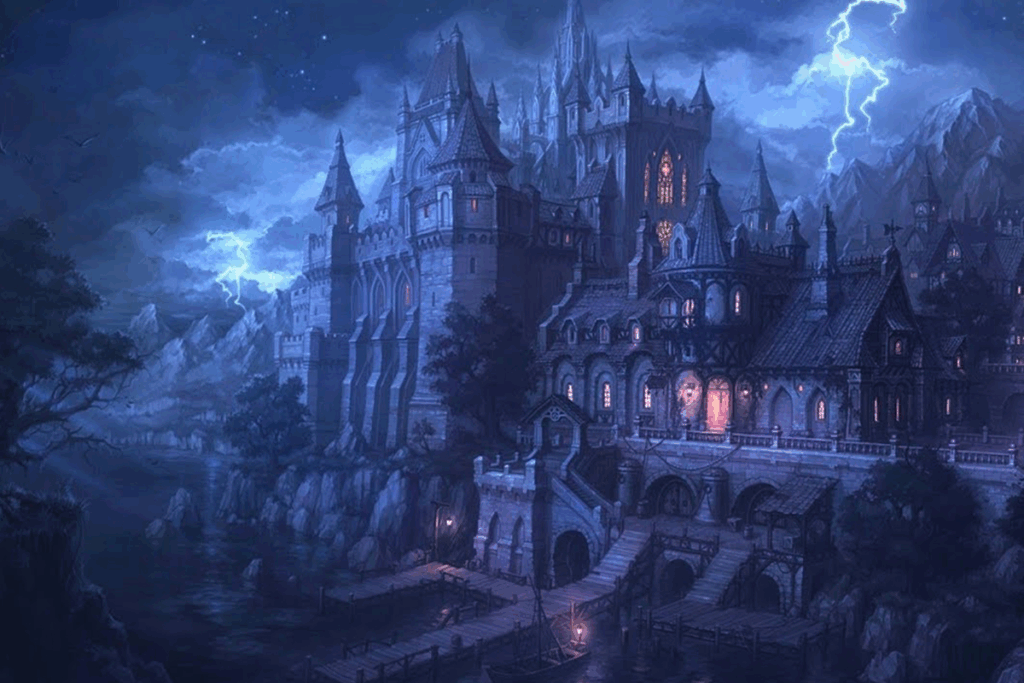
Temple of Geek: I was really, really excited and intrigued to see different horror tropes come to life in this because you had that very gothic vampire piece. You had a little bit of that more Frankensteiny vibe. A lot of different kinds of body horror and even zombies. What for you, was the most exciting piece of horror to explore this book?
Delilah S. Dawson: Oh, that’s a tough question. I write a lot of horror. I write long form horror novels. I have a series of horror novellas that’s out with Titan, and then I have a series of middle grade horror books. So I’m very tuned into horror. I’m a big scaredy cat in real life. I can read horror, because then you can close the book and back away. But in real life and even scary movies, I’ll watch. I’ll read the Wikipedia and then watch it on the airplane and be like, this is the safest place to watch it.
I am a nineties goth girl and always looking forward to add the gothic swooning fun of Castle Ravenloft, which is the funnest castle. I’ve got my map. You just get in here and even the names of the rooms are insane, the rooms of weeping, and you’re like, why? You just named it that? That’s just what you named it. This one’s got a cauldron in it. So there’s so much to play with in just the castle alone as established. Where as a player, you’re looking at a map and you’re thinking like, oh, I have to go this far, this many steps. This is going to happen.
But as an actual living person in this castle where you’ve been invited as an honored guest, it’s terrifying. There are statues that their eyes follow you or they just say one word. There are things living in the castle and moving constantly that you could encounter at any time. So a lot of it has to do with just going through the books and working with what’s already there and what you might discover, and taking that as in depth as the DM would.
It was fun to make the leap to get to write two of the Domains of Dread. That was another thing where when I was pitching, I was trying to pitch two and switch gear around and be like, okay, we’re going to start at Kartakass, and we’re going to go to Dementlieu. How do we do that? So I had a lot of fun ideas and the fact that we went with the most classic Dracula, Frankenstein was a real joy.
Dr. Mordenheim is so much fun to write. In the very early versions of Ravenloft, she was a dude, and now she’s a lady. She has this shock of white hair, and she’s insane. So it was really a lot of fun to both merge the horror of these worlds and also lightening it at the same time. Just because of the nature of these characters and how they’re going to respond to things. When you’re a beefy, magical drow barbarian, you’re harder to scare, so you have to dig deep.
Temple of Geek: Can you kind of talk to me about finding that tonal balance between the horror, action, adventure, and the comedy that we get with these characters?
Delilah S. Dawson: Very early on in my career, my editor was like, you need to come up with a brand. And I was like, no, I don’t know what I’m going to do next. I’m not going to just be like, yeah, this is my thrillers. My first book was Vampire Romance. My next book was Teen Demons in Savannah, Georgia. So I was like, it’s somewhere between whimsical and dark. Every one of my books, those are the two things that they move between. So my website was originally Whimsy Dark, because that was the only thing I could come up with.
So this is really my bailiwick, but with the movie Honor Among Thieves, they really played into the humor aspect, and that’s one of my favorite things about playing. I love storytelling with friends and just doing outlandish things and saying outlandish things. The DMs got the binder full of maps, and you’re like, no, I’m going to seduce the door, and this goblin is now my best friend. That’s what I’m going to remember for the rest of my life.
So I really wanted to put that kind of stuff in the book while also having the moments of horror. So it’s almost like driving a car. Sometimes you’re putting down the gas, on the horn, and then you got to break a little and pull back and coast for a minute. Have a moment of levity, and then sometimes also sadness in here, because it is in many places a serious book, but parts of this stuff is hilarious.
It’s super creepy being in Dr. Mordenheim’s lab, but that’s a brain in a jar, and he’s a bellhop. I can’t make that scary. That’s just insane. So you really have to do honor to the things that a person in real life would react to with revulsion, but also we have to get these corpses out of here. And of course that’s going to end up going Weekend at Bernie’s, because that’s just the nature of this world. Where flesh is very cheap and characters that are having to do impossible things to save each other.
Temple of Geek: I thought this book captured the spirit of a D&D campaign in so many ways. I loved that these characters, especially in that first fight, are bad at this. What was your approach to capturing the feeling of, oh, you rolled bad with these characters in a lot of different ways?
Delilah S. Dawson: Every character has a character sheet. They have stats. They have their spells written out. I’ve printed them off. I have D&D Beyond, but I’m old school. I have to write it down. So I’ve got a stack of all of the pages. So each time you’re looking at that, and I didn’t straight it up roll because that leaves it to too much chance, but it was very much a case of at the beginning, you guys are level two to three and you don’t work together as a team and you’re not making smart decisions. You weren’t ready. So you’re going to get low roles.
The thought of people who don’t know each other, many of whom have not been in a fight before, and a couple who are very deadly in a small contained space fighting monsters they’ve never seen before. It’s going to be chaos. Actually, some of that first scene was cut. They were like, they can’t be this bad. Let’s cut this little chunk here. And I was like, please let the zombie chicken fall through the ceiling. And they’re like, fine. You can have little zombie chicken as a treat, but you can’t use that as an excuse to put a mace in someone’s shoulder.
One of the hardest parts at first was just that we didn’t have the healers worked out. There’s not an obvious healer. I was having to use my cleric a lot, but nobody’s just sitting there with healing. Maybe they have one or two healing potions on ’em, but this is, we’ve not been wandering around filling our pockets with potions. It’s very like, oh, who are we going to heal? And who are we going to be like, good luck, buddy. Here’s a bandaid.
Why Jumping Between Character Perspectives Was Key
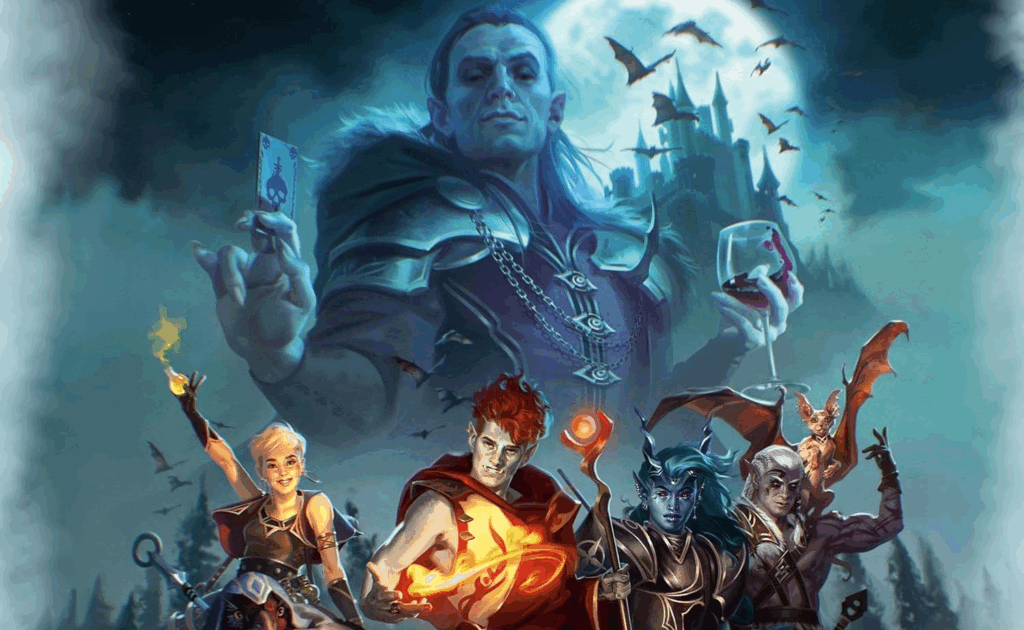
Temple of Geek: Did you have a favorite character of the and maybe a favorite evolution throughout the story?
Delilah S. Dawson: I really love Chivarion. I love that kind of Kronk-esque himbo of, he is very easygoing, but also very deadly. And also kind of stupid, but in some ways also smart. The combination of him and his pet tressym, I have a very big soft spot in my heart for them. And Kah, every time she got hurt, I was like, I’m so sorry. I want to protect you, and I’m not allowed to. My job is to hurt you. Whereas Alishai and Rotrog, you’re like, yeah, take it. Take it all.
Temple of Geek: There were definitely times with those two where I was like, I’m okay that you got kind of hurt there. That feels like that was your fault.
Delilah S. Dawson: Yeah, so those were the two that I felt like I had to work harder to redeem emotionally and draw you to them. Because just naturally, some people are more likable than others, but writing the words that came out of Chivarion’s mouth were very fun.
Temple of Geek: One of the scenes that truly I think will stick with me forever is when Strahd was quietly threatening Chivarion with his tressym. Just the detail that went into it. You have so much experience with horror, how do you approach a scene like that to build tension. Because it’s not like a horror movie where it’s like, oh, I have music and lighting and camera angles and all those things. These details have to be very specific to build the tension and make you just want to jump out of your seat simply from reading the words. How do you approach that sort of scene?
Delilah S. Dawson: Well, so I’ve got synesthesia, so my senses are always a big part of my writing. They’re all kind of tangled up. So I definitely try to really focus in on the details, not in a, I’m going to tell you everything about this purple chair, but as in you’re going to feel this fabric on the back of your legs and it’s going to bother you because I don’t like it when fabric touches the back of my legs.
That one, when you’re thinking about, I’ve created this hairless tressym that looks like a Thanksgiving Turkey with bat wings, and when you think about a wing and the delicacy of it. How that skin without any feathers is just so thin. It really kind of gives you a wedge of if someone wants to hurt an animal with a delicate wing like that, they can. Of course, again, I’m always just going into the old books and mining them for stuff, and when you realize that Strahd’s got these ex-wives who can turn into big, gigantic dire wolves, you’re like, oh, we can threaten you.
So yeah, it’s definitely just trying to find the right fulcrum to cause pain on these characters. That one was very, you have to go very slow and delicate with that kind of pain as compared to a jump scare or something that jumps out of a cabinet and you’re like, Ah! But this was more just very precise and delicate in its pain, which is fun too.
Temple of Geek: It was horrifying. Why did you want to write each chapter from a different character’s perspective? That was such a cool way to get external and internal thoughts from everyone, but also I loved how it played out with how we saw the action from different perspectives as well.
Delilah S. Dawson: I’ve personally never done super great with the head hopping of an omniscient narrator where it just goes to, I know this is how she’s feeling, that’s how he’s feeling. And I’m like, how do you know? You don’t know that. That boggles the mind. I first did a book like this when I wrote The Tales of Pell with my friend Kevin Hearn, which are more fantasy satire. But in writing those books with him, I kind of learned how to move the story along and with each character saying, okay, well this chapter needs to be through this character’s point of view.
It’s not always like 1, 2, 3, 4, 5. 1, 2, 3, 4, 5. Sometimes they get a little bit mixed up because of whose particular perspective you need to see at that point in time. But I like that a lot. It gives you their interiority, it allows you to see, they’re each having very different experiences. The experience that Fielle is having in Castle Ravenloft is super different from the experience that Chivarion is having or that Rotrog is having. So just a fun way to explore the world, to show you their thoughts, to give you little dollops of backstory that will come into play later.
Also to show you that these particular characters are not particularly honest with themselves or others. They’re very kind of unreliable narrators to their own selves. You don’t end up in Ravenloft unless you’ve done something questionable. A big question for these characters is are they good people who made one bad decision, or are they bad people who just started making their bad decisions? Or are they morally gray characters who made their choice and would do it again?
Capturing The Mystery & Terror Of Strahd
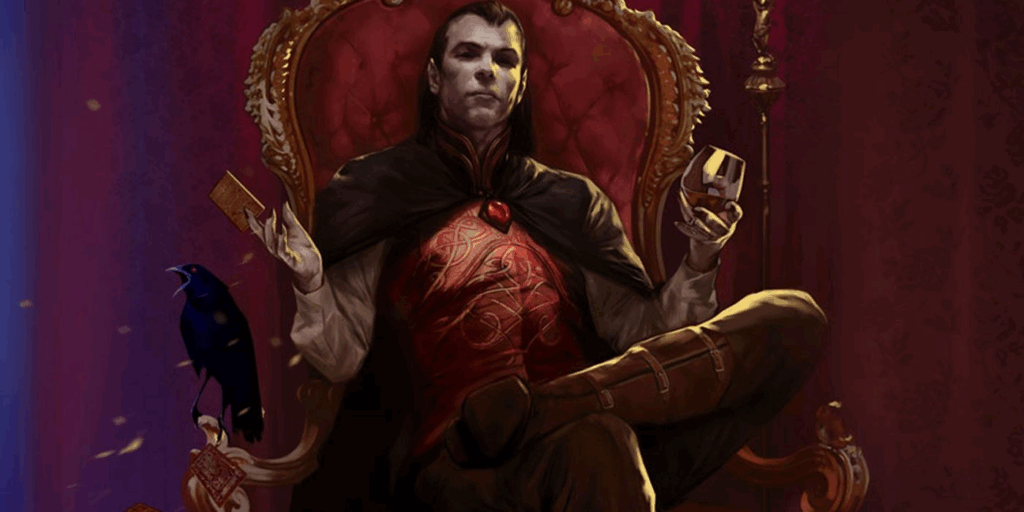
Temple of Geek: Was there a particular character that was maybe more challenging to get in their head space versus some of the others?
Delilah S. Dawson: I feel like Alishai might’ve been the hardest egg to crack because she puts up a very hardcore facade. She’s not open and easygoing as a character, which is easier for me. I’m a more open, easy going character. I’ll tell anybody anything. I’m like, the oversharing kind of autistic. Yeah, you want to hear about my trauma? Let’s go. So it was kind of hard to write a character who’s very controlled and contained and sees everything through eyes of suspicion is pretty far from my character. So hers was kind of difficult.
Rotrog kind of changed over the course of time. I had started with a more traditional Orc upbringing, and with the newer player manuals and such, the Orcs are no longer considered the wild tribe of vicious people who live in a hole in mountain now. They’re just people. So I definitely had to make a lot of adjustments because I hadn’t made that jump myself. You grow up thinking one thing and now there’s something else, and I’m with you. I just had to make a jump. So it went from he was living with the tribe under his uncle, and then his uncle was the shaman, and then it became like, Nope, he’s just a dude who went to magic school and wasn’t great at it.
Temple of Geek: I enjoyed how bad he was at it for how arrogant he was.
Delilah S. Dawson: He was very fun to write.
Temple of Geek: How did you approach writing Strahd? What we learn about him and his backstory doesn’t come from him so much. It comes from other characters around him. So why did you want that to be the way we learned about him?
Delilah S. Dawson: Probably my best known book so far is Star Wars Phasma, and we took a similar tact to that in that this is a character that is essentially unknowable. And what you know of them comes from other people’s experiences with them. So that’s how we approach Strahd too. Strahd is a character that in a book like this, we’re not going to see him as a sympathetic villain or a romantic figure or a sexy figure. Strahd is just a bad dude who did bad stuff and he’s going to use you as he wishes or discard you basically.
So I just wanted to make sure that we kept him that way. I didn’t want to change this very traditional character into a different version or make him something that he’s not. He is essentially an unknowable monster who does monstrous things. Strahd is the land and the land is Strahd. So I wanted to stay very clear with the traditional version of Strahd and also to kind of keep him mysterious to these characters. He’s not going to be like, let me tell you my story, that’s not who he is. He’s not the exposition guy. He is kind of always hiding behind these layers of misty moth eaten curtains.
Temple of Geek: How does this stand out from the past Ravenloft novels?
Delilah S. Dawson: The old Ravenloft books are a little more of a pining in a tower sort of thing. Jander Sunstar was a pretty chill dude. So I know that some people were hoping for kind of a return to exactly that tone. When you write for different franchises, my job is to do what I’m asked to do to the best of my ability and to bring the seriousness of Strahd and of the castle and the actual looming horror of this world to life in a way that is still lighthearted as the current tone of the general D&D world is right now.
The Evolution Of Protagonists Who Are Not Heroes
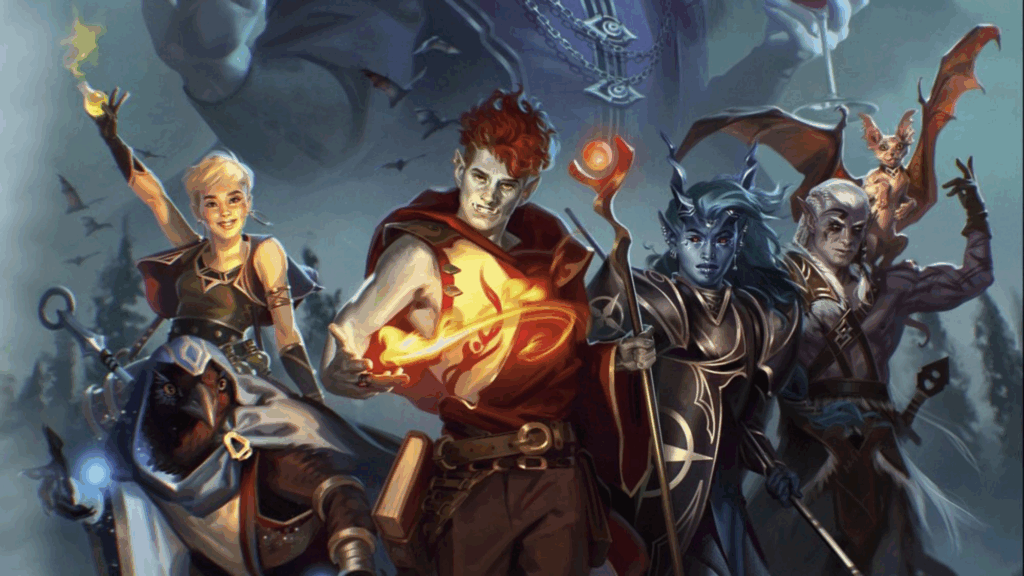
Temple of Geek: Did you have a favorite part in creating protagonists that aren’t heroes, even by the end? It’s not like we saved the day and everything’s great, and we’re the heroes of the realm now. It’s like, no, you’re moderately better people than you maybe were at the beginning and that’s about all you’re at.
Delilah S. Dawson: I mean, there’s not much of a story if they’re really good at what they do. Well, I guess there is, and that’s what The Boys is. You start out way OP and things get dark pretty fast. At the end, it was important that they come together as a group, that they are fighting together as a unit. That they understand each other better and are not just sticking up for themselves and kind of like, I got to save myself and get out, but then I have to help this person. How can I best do that?
The final fight was a real challenge to write and took some rewrites and trying to show that they were coming together as a group and as a found family, but also they didn’t level up to level 30. They’re up there at maybe six or something. They’re just not super great, but they’re still clever in using what they have. They’re motivated now to save each other instead of in that first fight where they’re just like, I got to save myself and get out of here.
It was very challenging, but I also went through with the Wizards people. I was like, do these fight scenes have to be playable? Do they have to be like, these are exactly the spells I have. Everybody takes their turn. The rolls could be actual rolls. And they were like, no, it should be more like a movie. It should be cinematic. You can’t hugely break laws like a level six guy can’t have a level 20 spell and nobody’s going to have an unbreakable sword. But I did try to make it as realistic as it could be while still keeping the story on point and engaging.
Temple of Geek: We end on such an ambiguous cliffhanger at the end where we really don’t know what could happen. Would you want to explore more stories with these characters in the future if possible?
Delilah S. Dawson: Oh my God, 100%. I love these guys! I think it would be so neat to see them, whether it was in Ravenloft or whether they get to stay together in Faerun. I think that they’d be a really fun little crew of people sticking together trying to help folks and still not being super awesome at it. Can you imagine a scene where Chivarion meets Astarion that would be just the funniest thing in the entire world. Shadow Heart meets Alishai, it’d be so much fun.
“Dungeons & Dragons: Ravenloft: Heir of Strahd” is available now for purchase.

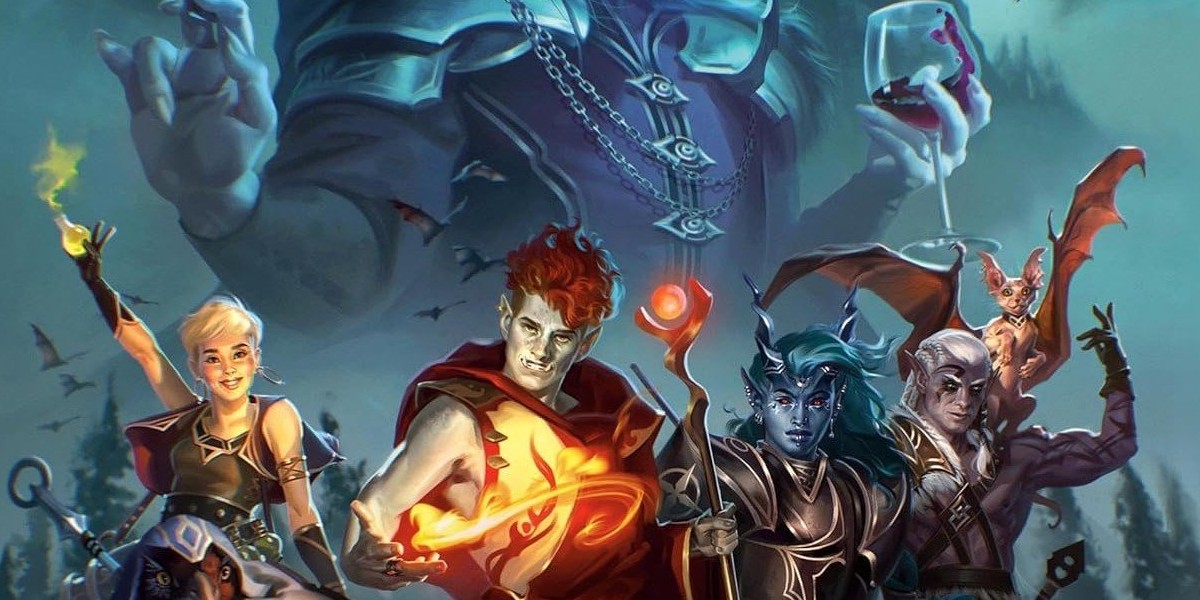
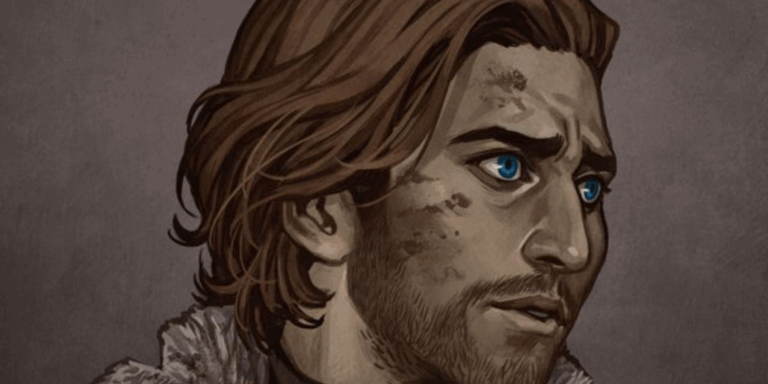
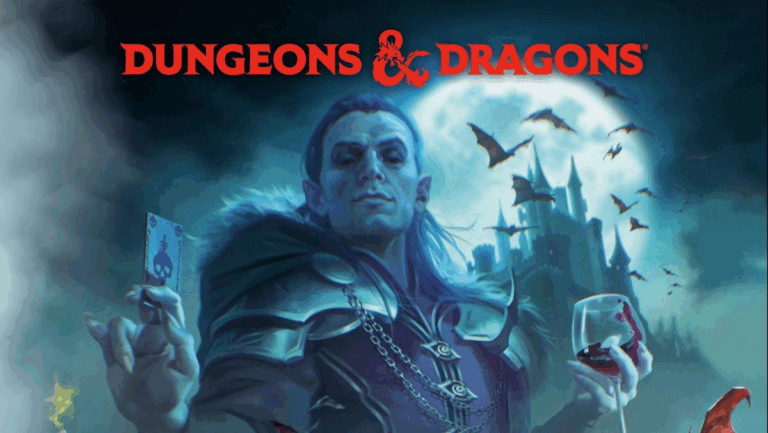
![[INTERVIEW] Creature Designer Neville Page Discusses Book ‘Beauty in the Beast’ Kickstarter & 20+ Year Career](https://templeofgeek.com/wp-content/uploads/2025/04/In-Camera-YouTube-Cover-768x432.png)
